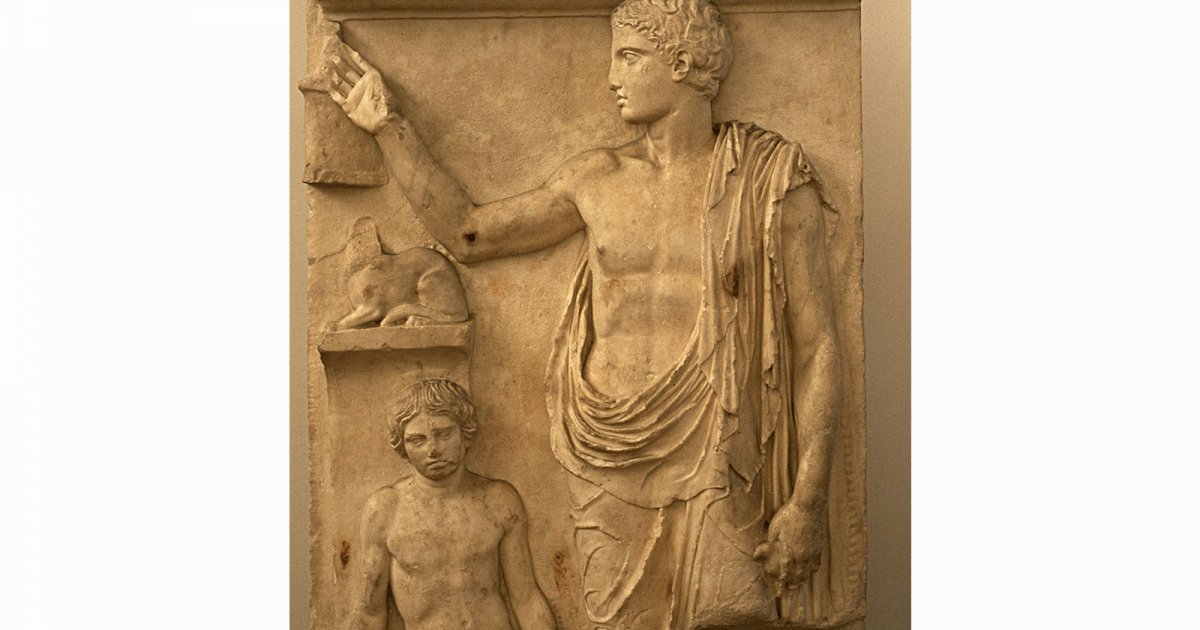FUNERANY RELIEF FROM SALAMIS
 Language: English / USA
Language: English / USA
The splendid Funerary Relief from Salamis dates to around 430 BC. The cult of the dead was very important for the Greeks and they managed to represent the moment of farewell with extremely touching images.
The deceased was a young man with an attractive, idealized face, standing and nude from the waist up. In his left hand, hanging by his side, he is holding a small bird, while his right hand is raised towards a cage, and his elbow is lightly brushing a cat, unfortunately missing its head. Perhaps the young man was fond of the bird, and wanted to remove it from the cage, where the cat would have been able to catch it. Below the cat is a beautiful young boy, a servant of the young man, who appears to have had all the energy sucked out of him, oppressed by sadness. The young man is looking towards places that are not visible to the living, distant from the life pulsating around him, but of which he is no longer a part, just like the small bird he is holding.
The relief is undoubtedly the work of a great sculptor, perhaps one of those who worked on the frieze of the Parthenon under the guidance of Phidias. A number of scholars believe it may be the work of Agoracritus, one of the most talented pupils of Phidias.
Unlike the older steles, which were tall and narrow and featured a single character, the funerary steles of the Classical Period by the great sculptor Phidias are larger, at times even in the shape of a small temple, and including many figures, among whom an intense, soundless dialogue is established, an evolution of the new form of expression first used by Phidias on the Acropolis.


